BiSaddle EXT Stealth review
The world's only adjustable saddle has a patented system that allows you to get your perfect saddle shape down to the last millimetre

The Bisaddle could be prayers answered for anyone who has struggled to find the right saddle or who suffers from pain. The patented adjustable system - which BiSaddle says is the world’s only - is user friendly, solid and reliable and most of all, really clever. However, it's very heavy at 400g and you need to pay a lot of money for the lighter top-spec version with the carbon base; the jig-like appearance won't suit everyone's race bike and even at its widest this model can't match the sitbone width of some women-specific standard road saddles. If it's just the weight and aesthetic that puts you off, it could still work well indoors or as part of a bike fit solution.
-
+
Adjustability
-
-
High weight
-
-
Range of adjustability limited
-
-
Utilitarian looks
-
-
High price
You can trust Cycling Weekly.

The BiSaddle EXT Stealth is one of a range of pre-built saddles that the US brand offers, but you can equally build your own from its website.
There’s no entry-level or top-spec model as such - just different lengths and pad shapes.
The EXT Stealth is 243mm in length - which is comparable to a 'stubby' saddle (a full length saddle is around 275mm). It is, according to BiSaddle, “preferred by road, e-bike and time trial cyclists." The even shorter 198mm SRT is for “tri, gravel, mtb and XC.”
There’s also a non-cutout version of the EXT which has the same dimensions as the EXT Stealth.
Describing the EXT Stealth, Bisaddle says: “The EXT Stealth has a center cutout … for those cyclists who want extra perineal relief, but still want the ability to ride on the nose. The nose width ranges from 45mm to 70mm. The rear width ranges from 120mm to 165mm. (Width may be limited when the front or rear are adjusted to a wide position.) Helps relieve genital numbness, saddle sores, and sit bone pressure.”
I found the flex in the shell and substantial padding a little excessive for the road; the saddle was very well suited to time trialling, but the weight and aesthetic prevented me from fitting the perch to my race bike.
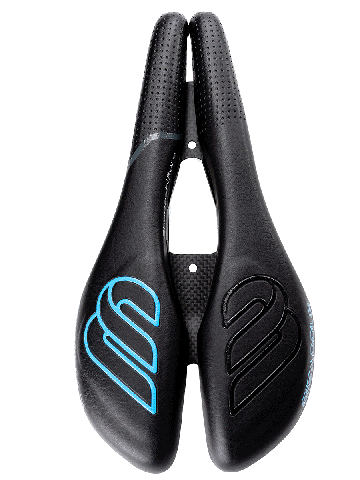
BiSaddle EXT Stealth: construction
All the BiSaddle models use the same construction. There’s a base to which the rails are attached, with the two halves of the saddle pad sections bolting to the top of the base. The front and rear of the saddle both slide inwards and outwards on curved slots so that you choose between a ISM-style two-pronged TT saddle or a more regular shaped road saddle with a narrower nose and a wider rear - or anywhere in between.
I should say at this point that although this range of adjustment was enough for my sitbones, a female colleague who tried the BiSaddle EXT Stealth before me found that it couldn't extend to the 168mm that her sitbones required. This was disappointing as brands such as Specialized - a brand which makes unisex as opposed to women's specific saddles - go this wide as standard.
So even though BiSaddle promises its saddles are "for all cyclists including men, women and road, tri, mtb," it's still worth checking your sitbone measurements against what's on offer. BiSaddle does have other platforms, which can go wider at the rear; if you like the concept it's worth browsing to ensure you choose the right saddle for you.
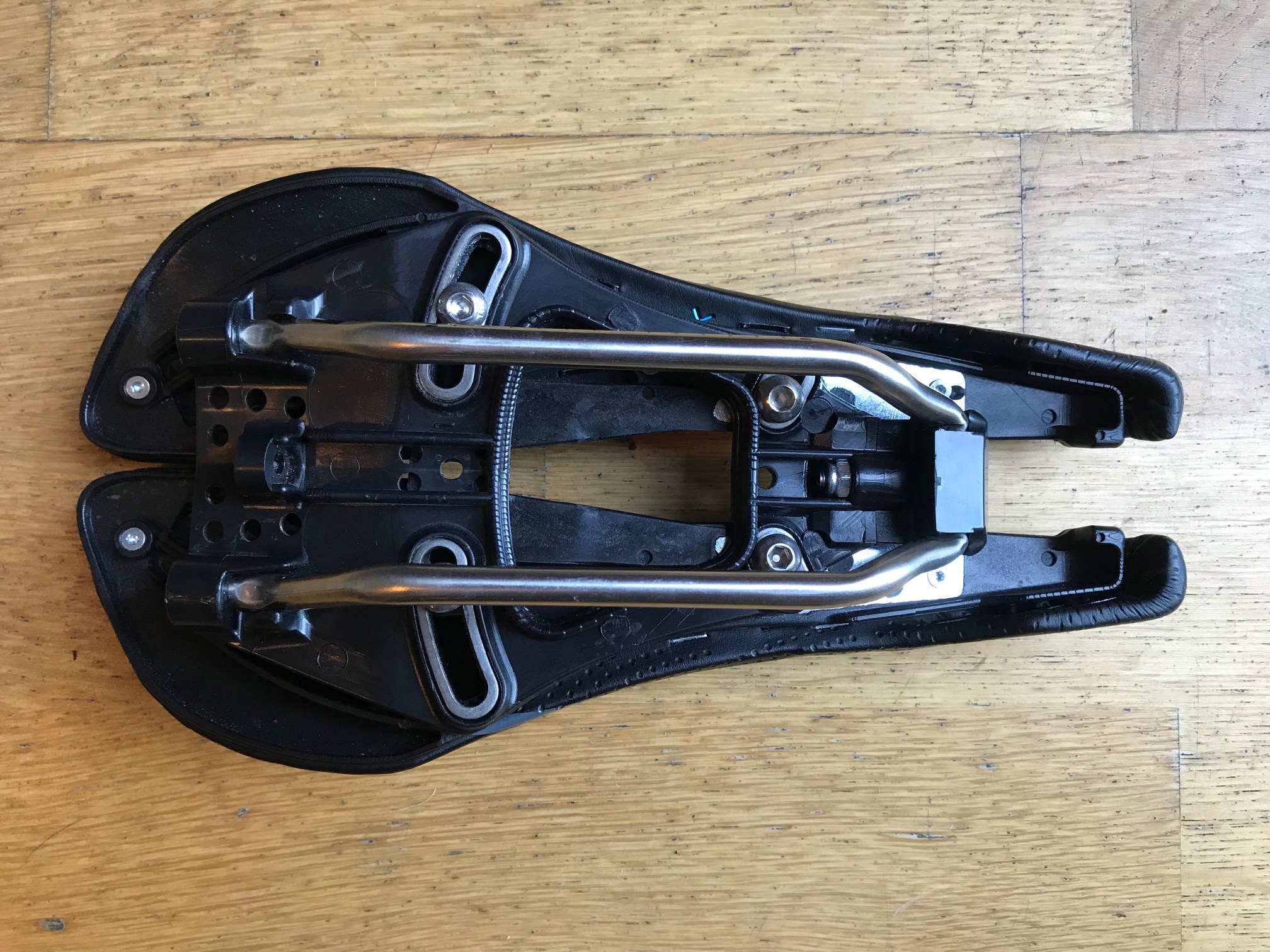
Since the two sides adjust independently, you could theoretically get an absolutely precise fit if your sitbones aren’t 100 percent symmetrical or you don’t sit 100 percent straight on your saddle due to a leg length discrepancy or back issue, for example.
There are even more adjustability options in the box: the saddle comes with two wedges that can make the saddle flatter or more rounded. These add weight and stack height and BiSaddle recommends only using these if you can’t get comfortable with the no-wedge setup.
It all sounds fiendishly complicated and a massive faff, but it actually isn’t at all. The instructions are very clear and understandable and the quick-start guide is printed on the inside of the box so you don’t have to flick through a thick booklet with everything repeated in multiple languages except the instructions themselves.
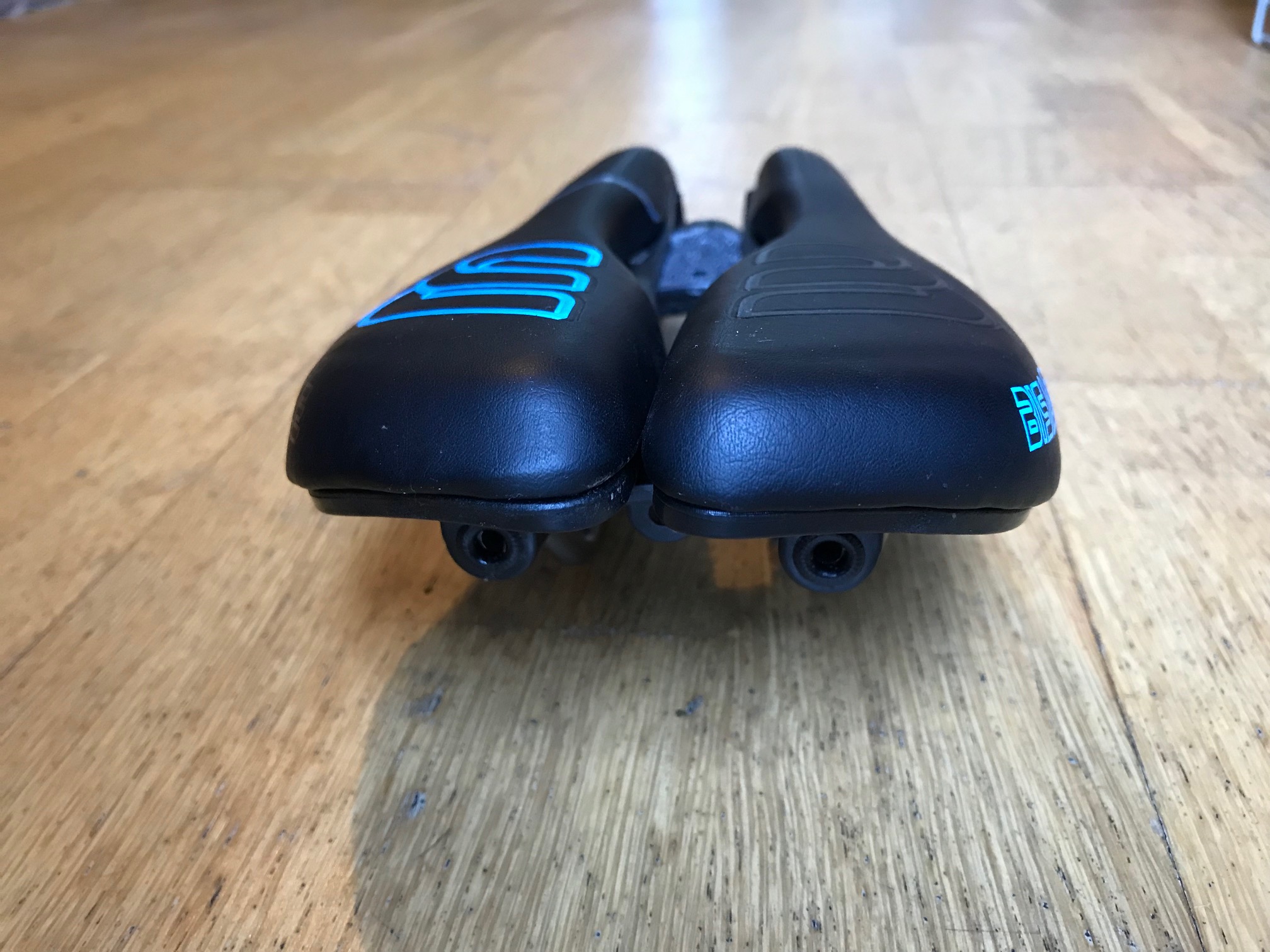
If you’re starting from scratch, Bisaddle supplies a piece of corrugated cardboard that you sit on in order to find your sitbone measurements, plus a complimentary Crayola crayon that you use to create a rubbing on the cardboard once you have the imprint of your sitbones, making measurement more accurate.
Overall I was impressed not only with the idea of the adjustable saddle but also with the execution of it.
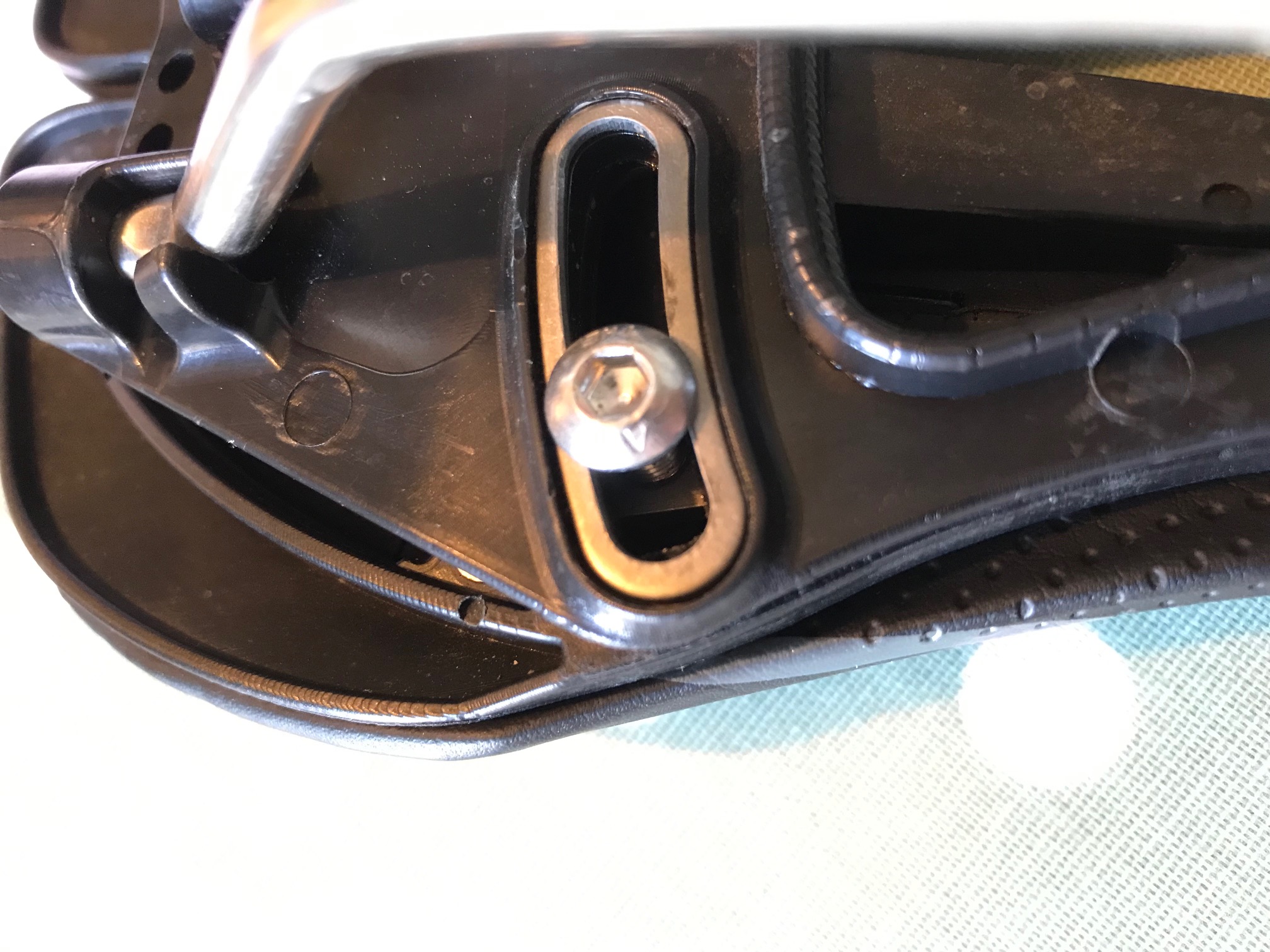
Setting up is easy too. Bisaddle supplies a short Allen key that easily reaches under the rails to make adjustments to the four bolts.
There are small strips of sandpaper stuck to the sliding surfaces so that once you’ve got the position right and tightened the bolts - or even if you’ve only semi tightened them to check - there’s no chance of movement.
The ride
Full disclosure - I am a big fan of the ISM PN 3.0, gave it full marks when I reviewed it three years ago and it's still my favourite TT saddle. I rather cheesily proclaimed it was "love at first sit." For time trialling it was a revelation for me. I didn’t particularly suffer from numbness or pain but sitting on the nose of a regular saddle is enough to induce both after a while, and the ISM two-pronged nose solves that at a stroke.
However, although I haven’t changed my mind about the ISM I have since noticed certain things about it I would change, and one of those is that I would like the nose prongs to be slightly closer together, perhaps tapering more towards the front. I’ve found a wide nose can chafe if you sit back in the saddle on a climb. To get around this, some riders have squeezed the prongs closer together and zip-tied the rails to reduce the width.
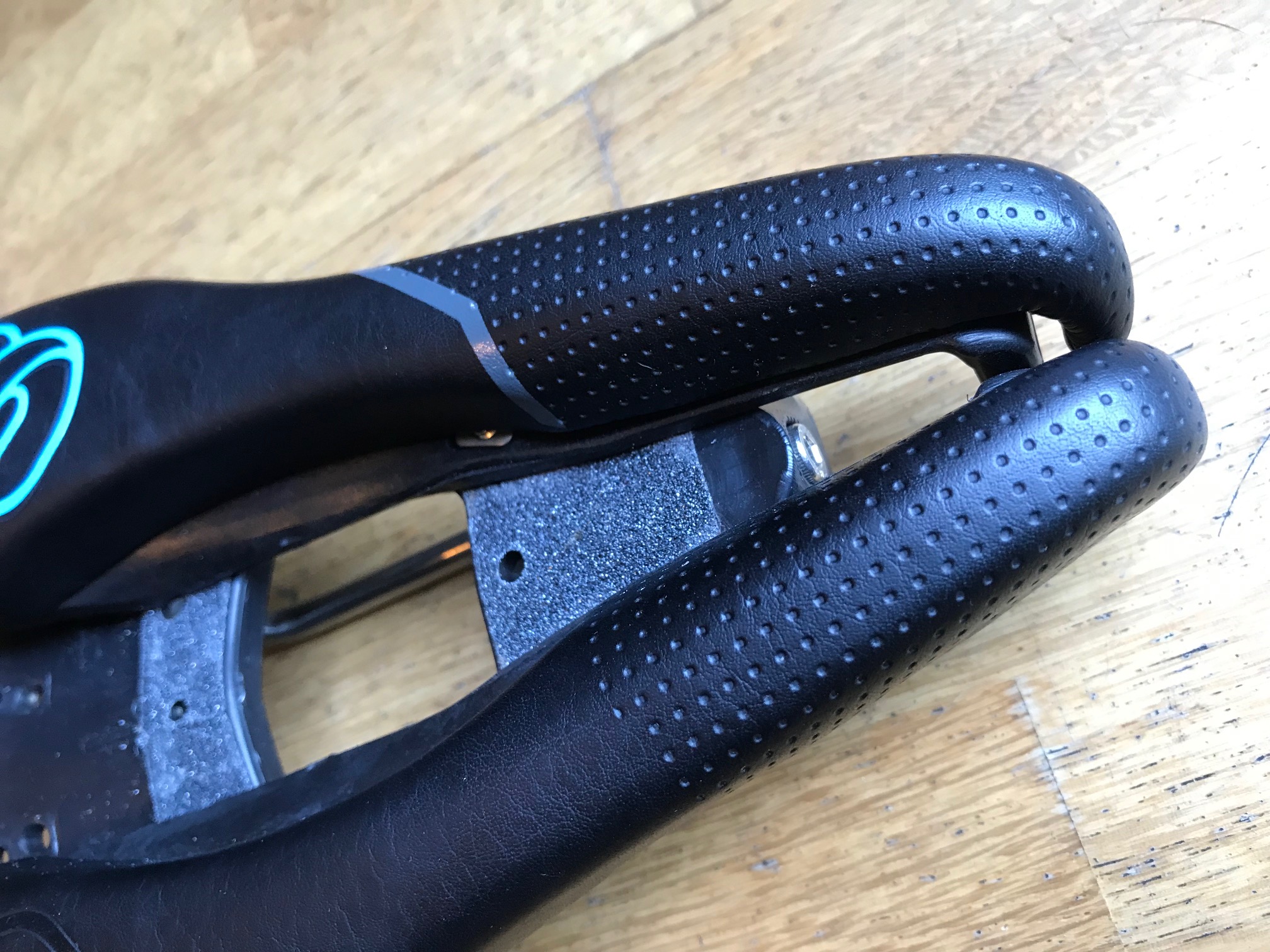
With the BiSaddle I was able to get the nose width and taper I wanted while keeping the perineum-friendly pronged nose.
I fitted it to my Wattbike Atom and tested this with a Zwift session that has five minute ramps on the tri-bars and upright high-cadence sprints in between and found I could tweak it so it was functioning exactly between the ISM shape and a more regular road saddle.
The level of padding is very similar to that of the ISM - which I personally find too much for road riding. I know there are some riders who like to ride ISMs on their road bikes but I'm not one of them, but it's perfect for an on-the-nose TT position.
Additionally, the prongs flex so that if you do change position slightly there's a bit of 'give' rather than guaranteed chafing, but at the same time I found them supportive enough when in the TT position.
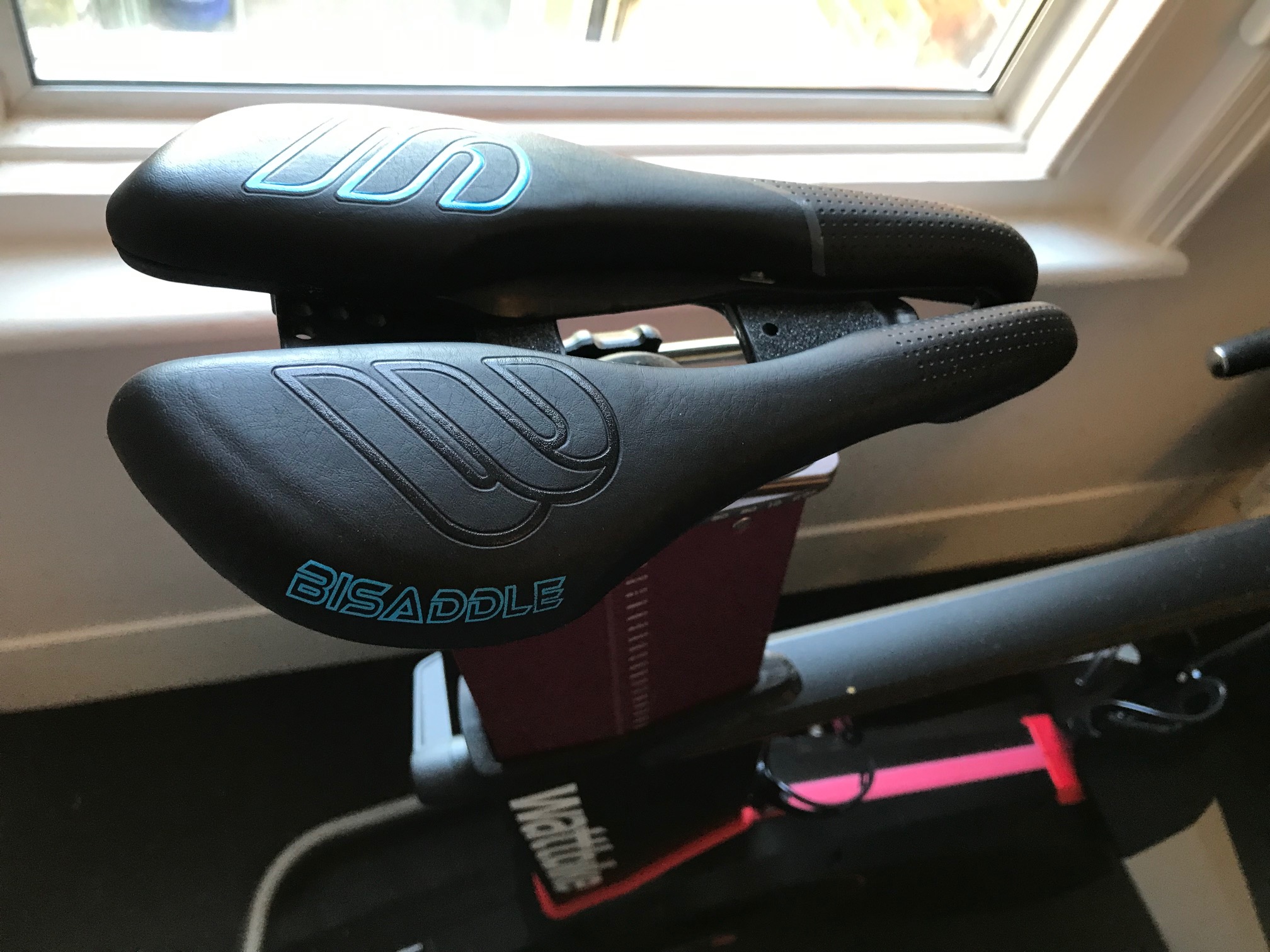
Like the nose prongs, the shell of the standard nylon 'Flex Frame' (the clue is in the name) is very flexible and can rock from side to side on the rails under load. I asked BiSaddle about this and they said: "The frame is made from a high performing Nylon with flexible polymers. This allows the frame to flex with body movement and absorb road vibrations. We have found that most cyclists prefer some flexing in their saddle."
If you're more accustomed to a stiffer shell - as employed by most performance saddles - you can feel as if you're losing a little pedalling stability as well as a bit of ride feel, as I did. This isn't so noticeable when using it as a TT saddle and sitting further forward.
BiSaddle says the 'Carbon Fiber Solid Frame' option is stiffer for those who don't want the flex in the shell: "The carbon frame provides a lighter weight and a rigid ride for those who do not want any flex in their saddle (no rocking). The BiSaddle surfaces are interchangeable between the flex frame and the carbon frame."
However, speccing the carbon frame bumps up the price to $349.
I've stopped short of using the BiSaddle EXT Stealth for my actual time trialling because although I’m no weight weenie those extra grams would prey on my mind, even if in reality it wouldn't make much difference until I was going up a very steep hill; 400g for me is just a bit too much for a race bike saddle.
On the other hand, being comfortable could save more time than being lightweight.
Additionally, and this is also down to personal preference, the multiple bolts, empty holes (where the wedges attach) and patches of sandpaper don't work aesthetically for my TT bike, which I like to keep looking as sleek and minimal as possible.
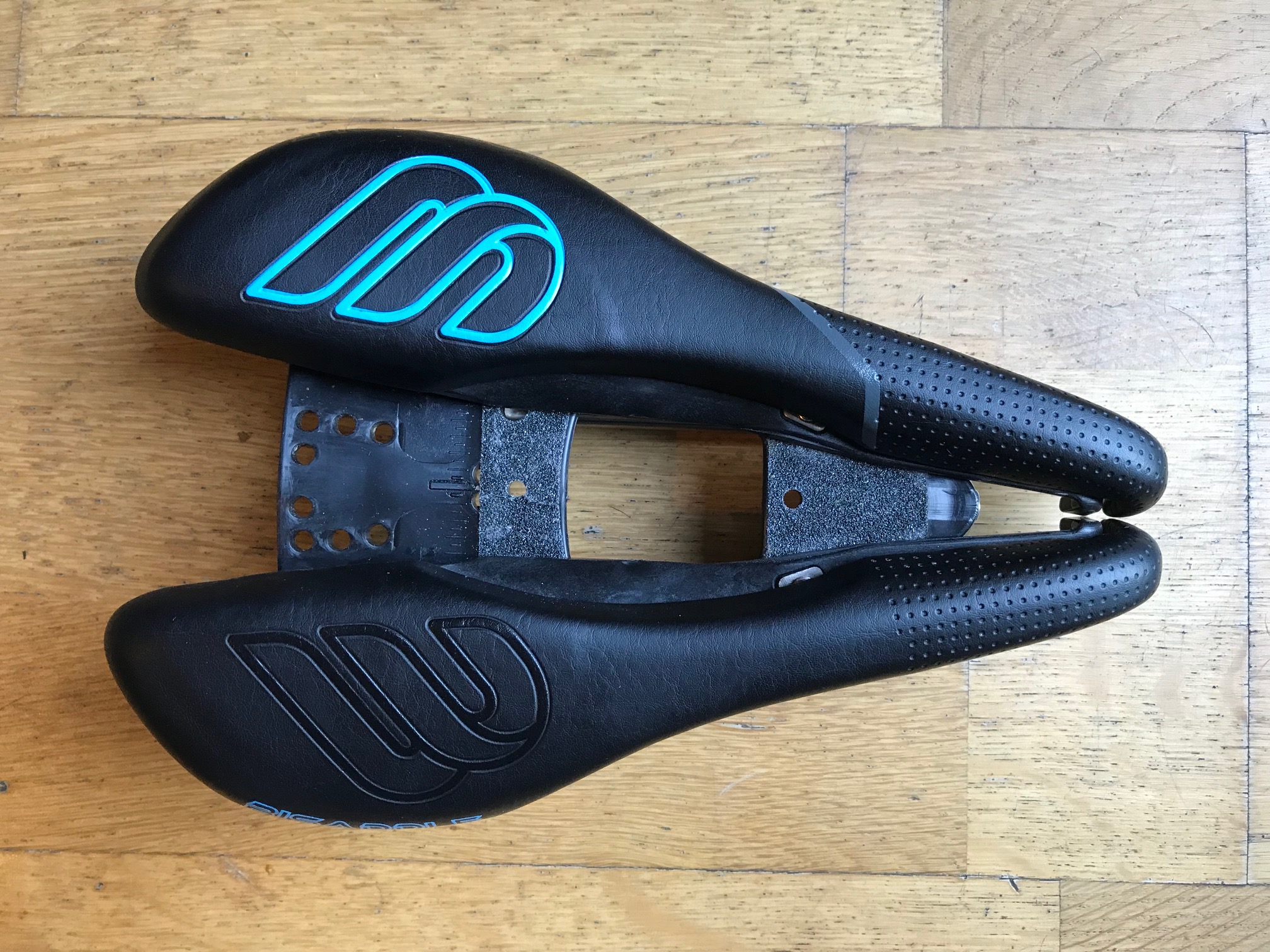
As I see it the BiSaddle could work well as a jig that bike fitters could use to find the right saddle for a client. Just as frame jigs are commonly used to find a rider’s geometry, why not a saddle jig? Based on a template obtained from the BiSaddle, the fitter could go on to recommend a non-adjustable, lighter, more performance orientated and more attractive-looking saddle for the client. If such a saddle didn’t exist, then using the BiSaddle itself would still be an option.
It's also great for indoor riding where weight and aesthetics are not an issue - and it's still fitted to my Wattbike.
Value
In its basic build the BiSaddle EXT Stealth looks like reasonable value for what it is. The $249.98 is directly comparable to the ISM PN 3.0. However, the titanium-railed TI Flex frame - which ours has - puts it up to $299 and it’s still 400g.
Having said that, the BiSaddle, being the world’s only adjustable saddle, doesn’t have any direct competitors and there are certainly many non-adjustable saddles that are much more expensive.
The BiSaddle’s value ultimately has to be defined by how valuable it is to the user. If you struggle to find a saddle that’s comfortable for you, and the BiSaddle is the solution, then it will be invaluable.
BiSaddle's prices are in USD and buying is done via its website but it ships overseas. The brand is currently working to get a distributor in the UK, and it does have a distributor in the Netherlands and Italy.
The company offers a 90-day money back guarantee - a full refund if you can't get comfortable on your BiSaddle.
If you want to find out more about choosing the right saddle for you, click the link for our guide.
| BiSaddle EXT Stealth | Header Cell - Column 1 | Header Cell - Column 2 |
|---|---|---|
| Base | Titanium Rail Flex Frame | Row 0 - Cell 2 |
| Adustable sitbone width | 100-165mm | Row 1 - Cell 2 |
| Length | 243mm | Row 2 - Cell 2 |
| Weight | 400g | Row 3 - Cell 2 |
| Contact | www.bisaddle.com | Row 4 - Cell 2 |

Thank you for reading 20 articles this month* Join now for unlimited access
Enjoy your first month for just £1 / $1 / €1
*Read 5 free articles per month without a subscription

Join now for unlimited access
Try first month for just £1 / $1 / €1
Get The Leadout Newsletter
The latest race content, interviews, features, reviews and expert buying guides, direct to your inbox!
Simon Smythe is a hugely experienced cycling tech writer, who has been writing for Cycling Weekly since 2003. Until recently he was our senior tech writer. In his cycling career Simon has mostly focused on time trialling with a national medal, a few open wins and his club's 30-mile record in his palmares. These days he spends most of his time testing road bikes, or on a tandem doing the school run with his younger son.
-
 Trek, State and Specialized raise bike prices while other brands limit US releases — Is this just the beginning?
Trek, State and Specialized raise bike prices while other brands limit US releases — Is this just the beginning?As tariffs hit, the bike industry is forced to adapt, whether through price increases, limited releases, or a restructuring of supply chains
By Anne-Marije Rook Published
-
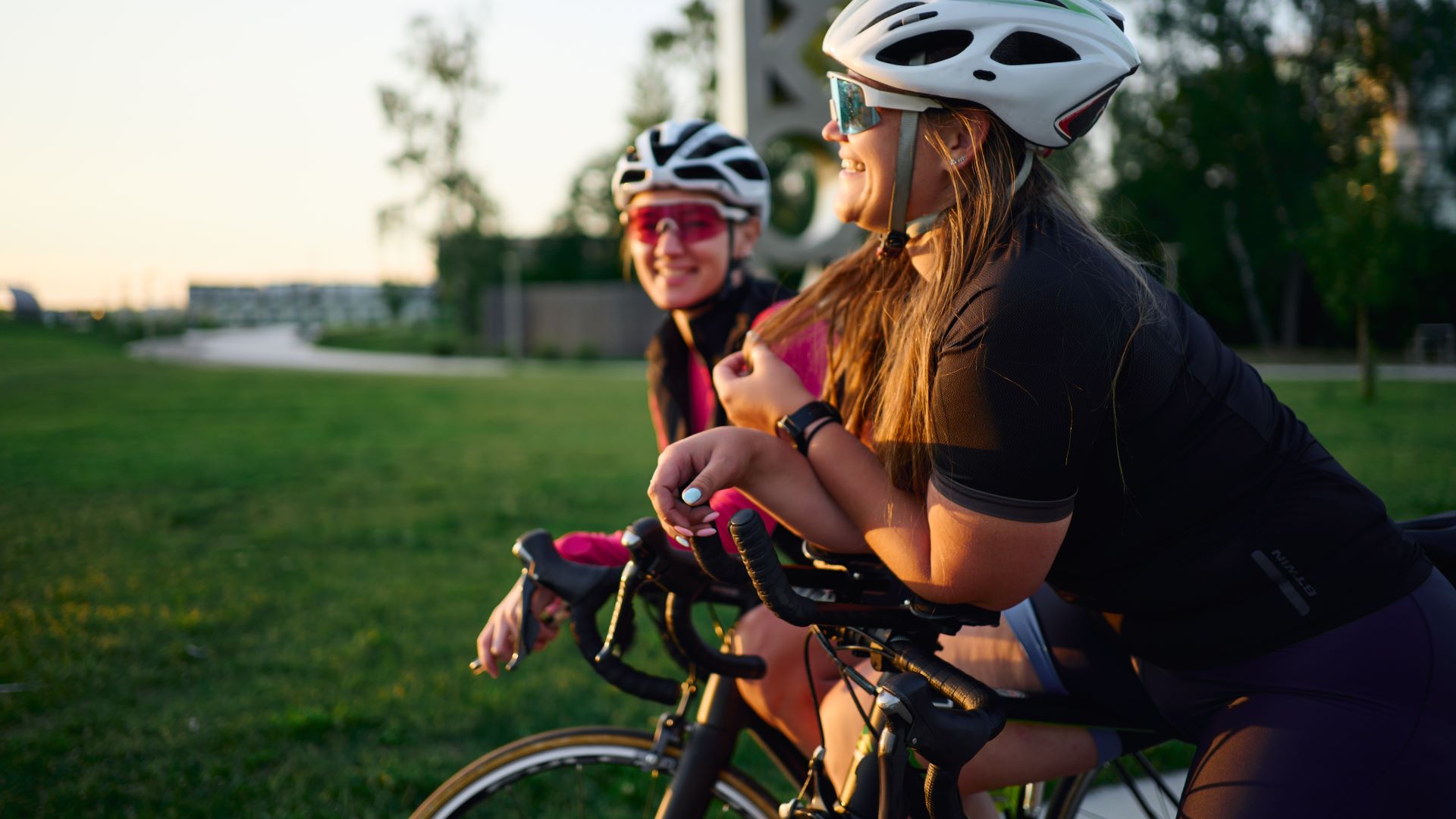 How I got my non-cyclist friend hooked on riding bikes — and how you can, too
How I got my non-cyclist friend hooked on riding bikes — and how you can, tooWith a little bit of gentle guidance, “bikes aren’t my thing” can turn into “when’s our next ride?”
By Marley Blonsky Published
-
 'The line was 5 metres too far' - Tadej Pogačar reacts to Amstel Gold Race second place
'The line was 5 metres too far' - Tadej Pogačar reacts to Amstel Gold Race second placeWorld champion reeled back and beaten in sprint by Lidl-Trek's Mattias Skjelmose
By Tom Davidson Published